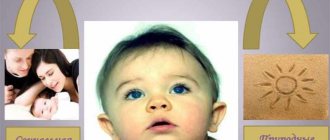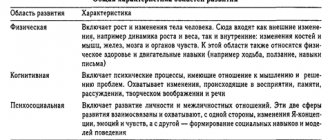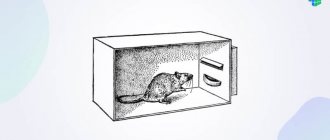Physical self-improvement includes a number of methods and techniques that allow you to form a personality that is harmoniously developed in many respects. Self-education is impossible without willpower, so it is necessary to constantly develop and strengthen this quality, consciously overcoming obstacles that often arise in the process of achieving a goal.
Self-improvement is the basis of a vibrant life
Health is an integral part of a bright, happy life. Illness deprives a person of many joys and limits his capabilities. Willpower helps you set goals and achieve them by breaking them down into smaller tasks.
Physical development involves the following activities:
- General strengthening of the body. It is expected to perform exercises to improve movements, endurance, and increase immunity.
- Preparing young people for military service and future work.
- Fostering respect for various types of physical activity and sports.
- Discovering and developing sports talents.
Physical education classes greatly influence the spiritual development of the individual. This is due to discipline, responsibility, perseverance and other important qualities that must be demonstrated when working on your own body. A physically strong person changes his attitude and behavior in all areas of life. Labor and social activity is increasing, and this is reflected in the economic development of the country.
Cultivating willpower
Physical self-education and self-improvement contributes to the fact that a person’s existing skills, knowledge, and practical abilities begin to expand. But the results will be short-term if there is no subsequent desire for constant self-development.
Personal qualities appear through the drawing and the contour of the body. Training the body leads to mental work that changes a person from the inside. An important stage in the course of physical development is the development of willpower. Often this is a natural process, because by setting goals, a person overcomes the difficulties that arise in the course of achieving what he has planned. Willpower becomes not only a consequence of physical self-education, but also moral, intellectual, emotional, aesthetic, etc.
Inner strength is based on 2 important components - willpower and self-discipline. Every person can master them and develop them, since these internal qualities are not limited by nature. But in order to be successful in this matter, you need to systematically work on yourself.
In order for a person to engage in physical self-improvement, he needs to constantly maintain motivation. In this case, motives can be determined by himself or come from the external environment. A person is pushed to work on himself by the values of the society in which he lives, the desire to gain recognition among certain segments of the population, self-criticism and criticism, which allows him to see his own shortcomings and begin to correct them.
Often, a person is forced to take care of his own body because he understands that he does not meet social or professional requirements. Work on oneself begins where motivation and willpower intersect: having important motives, it will not be difficult for a person to overcome the laziness and apathy that stopped him from self-improvement. Weak motivation or its complete absence will force you to work only on willpower. It is difficult to form useful, healthy habits in such conditions.
Critical Assessment
This factor is very important psychologically for any person. It’s bad when people’s self-criticism is below a critical level. As a rule, at an early age, many teenagers are prone to low self-esteem: they have complexes, are dissatisfied with their appearance, compare themselves with movie stars and come to disappointing results.
This leads to young people developing self-doubt and losing the desire to strive for a further career. This is due to inflated perception criteria. Teenagers only dream of seeing themselves as a superhero or a top model. And no less. This factor prevents them from living, making a career and working fully.
The adequacy of such self-esteem should occur with the sympathetic intervention of adults. Because a teenager is not able to correctly evaluate himself and often evaluates himself negatively.
The influence of physical education
Physical culture has a strong influence on personal development. A person gains confidence in his abilities based on the capabilities of the body and spirit that he possesses. Such people know how to overcome difficulties, show courage, patience, and determination. Thanks to physical work on oneself, a person gets rid of bad habits and promotes his intellectual growth.
For a person who regularly engages in physical self-improvement, life seems different. He knows how to take responsibility, is not afraid of problems and looks at life more optimistically. Experts have found that during physical activity, such as running, the body releases the joy hormone endorphin. The state of runners after long races is compared to a state of mild alcohol intoxication.
By working on sports motor skills, a person gains strength and speed. Practical motor skills train endurance, perseverance, and agility. The transfer of theoretical knowledge on physical culture and education develops flexibility of thinking.
Health walking
In mass physical culture, health-improving (accelerated) walking is widely used: at an appropriate speed (up to 6-5 km/h), its intensity can reach the training regime zone (heart rate 120-130 beats/min). In the USA, for example, 53 million Americans engage in fast walking (according to the Gallup Institute). Under such conditions, 300-400 kcal of energy is consumed per 1 hour of walking, depending on body weight (approximately 0.7 kcal/kg per 1 km of distance traveled). A person with a body weight of 70 kg spends about 50 kcal when walking 1 km. At a walking speed of 6 km/h, the total energy consumption will be 300 kcal (50*6). With daily health walking exercises (1 hour each), the total energy consumption per week will be about 2000 kcal, which provides a minimal (threshold) training effect to compensate for the deficit in energy consumption and increase the functional capabilities of the body.
This is supported by the results of a study of maximum aerobic performance. So, after 12 weeks of training in recreational walking (1 hour 5 times a week), the subjects observed an increase in VO2 max by 14% compared to the initial level. However, such a training effect is possible only for untrained beginners with low UFE. For more trained athletes, the health-improving effect of walking decreases because with increasing training, the intensity of the load becomes below the threshold. Increasing walking speed to more than 6-5 km/h is difficult because it is accompanied by a disproportionate increase in energy costs. This is why when moving at a speed of 7 km/h or more, running is easier than walking quickly.
Accelerated walking as an independent health remedy can only be recommended if there are contraindications to running (for example, in the early stages of rehabilitation after a heart attack). In the absence of serious deviations in health, it can only be used as the first (preparatory) stage of endurance training for beginners with low functional capabilities. In the future, as your fitness level increases, recreational walking should be replaced by running training. A group of scientists at the University of Washington observed 11 men and women aged 60-65 years with excess body weight (an average of 75 3 kg with a height of 161 cm) and cholesterol metabolism disorders. At the first stage of training, low-intensity loads were used for 6 months: recreational walking at a heart rate equal to 60% of the maximum (5 times a week for 30 minutes); after this, a 12% increase in BMD was noted compared to baseline. Over the next 6 months, the intensity of exercise was increased to 80% of the maximum heart rate (running); as a result, BMD increased by another 18%, blood cholesterol decreased, and HDL content increased by 14% [5].
The effect of reducing stress on the body
The development of modern technologies is aimed at facilitating or eliminating physical stress on the human body. The emergence of a large number of transport, mechanization of manual labor. Many athletes are forced to give up such natural things for humans as an elevator or an escalator, preferring to take the stairs. This method of loading can be used by people who do not have time to exercise.
Reducing physical activity on the body leads to weakening of the skeleton and heart muscle. Bones begin to transform, fatty layers appear, and it becomes harder for a person to perform simple actions and movements. The aging process becomes more intense, the body loses resistance to infections, all this greatly affects performance. Neuroses and stress in the absence of physical activity can lead to the development of heart and vascular diseases.
For a long time, it was believed that sports should not be played by people who have health deviations from the norm, for example, myopia, heart disease, etc. However, now experts, on the contrary, point out the great benefits of physical work on oneself for people with various pathologies. But at the same time, the training program for them should only be drawn up by instructors with appropriate medical education.
INTRODUCTION
As a result of insufficient physical activity in the human body, the neuro-reflex connections established by nature and strengthened in the process of heavy physical labor are disrupted, which leads to a disorder in the regulation of the activity of the cardiovascular and other systems, metabolic disorders and the development of degenerative diseases (atherosclerosis, etc.). For the normal functioning of the human body and maintaining health, a certain “dose” of physical activity is necessary. In this regard, the question arises about the so-called habitual motor activity, i.e. activities performed in the process of everyday professional work and in everyday life.
The teaching of R. Mogendovich about motor-visceral reflexes showed the relationship between the activity of the motor apparatus, skeletal muscles and vegetative organs [3].
The health-improving and preventive effect of mass physical culture is inextricably linked with increased physical activity, strengthening of the functions of the musculoskeletal system, and activation of metabolism.
The relevance of this work is due to the fact that health comes first among other human life priorities. We will never be able to fully live and work without good health and well-being. It is a healthy lifestyle and physical self-improvement that make our lives bright and rich, and simply help us to live fully. You must agree that if your health is undermined, there is nothing to dream of happiness.
Main stages of self-education
Before you begin self-improvement, you need to conduct a thorough self-analysis. It consists of the following steps:
- assessment of one’s own capabilities in the field of personal and physical characteristics;
- identifying your strengths and weaknesses;
- development of a program to overcome negative qualities.
Self-analysis should be based on introspection, thanks to which one can evaluate the actions taken. You cannot engage in self-deception; you must maintain maximum impartiality. For example, if a training session was postponed, you need to find out the reason why this was done. If this is an illness, then work should continue as before. If the reason is laziness, you should increase motivation, which always helps to overcome this negative quality and become a preventive measure for its subsequent manifestations.
An important component is critical self-assessment. It is most difficult for teenagers to demonstrate this, since they often suffer from low self-esteem, which detracts from any achievements. Therefore, adults should participate in the lives of people in puberty.
Physical work on yourself consists of 2 stages. The first is based on making a conscious decision to work on yourself. The second involves developing a plan that includes methods and means by which self-improvement will be carried out. Planning must include actions that occur at certain time intervals.
The goals that are determined by a person must correspond to his capabilities. A person who has recently started running will not be able to cover long distances. In addition, this type of load can harm his body or deprive him of the desire to be physically active for a long time.
The third stage is the implementation of the assigned tasks in practice. If laziness gets in the way, in addition to motivation, you can use self-hypnosis or self-order. It is useful to keep a success diary in which you need to record all the achievements, even small ones, that a person has.
Running and its healing effect
“Our body is created for hard work, such as running, and if it is not hopelessly neglected, not swollen with fat, not poisoned by alcohol and nicotine, not weighed down by real and imaginary worries, it will respond to such work with gratitude and pleasant fatigue,” writes A. M. Tchaikovsky [2, p. 107-108].
You need to run either every other day or every day, but no more than 15-20 minutes [2, p. 130]. However, it should be remembered that such a system of exercises is less effective; it is more suitable for maintaining physical fitness, but not for improving it. In any case, when jogging, it is important to avoid lethargy, severe fatigue, as well as a decrease in performance (this means that you have exceeded the limit of your capabilities and the load needs to be reduced), because as A. Lydiard rightly noted:
- Always stay within your limits and never run with someone younger and stronger.
- Train, but don't overexert yourself! Healthy exercise, not overload, strengthens the body.
The main method of training in recreational running is uniform (or uniformly accelerated) running. In this type of training, the runner covers the entire distance at an even pace at a constant speed.
Well-trained runners (who have been training for at least 4-5 years) can use the repetitive running method during training. It consists in the fact that in the second half of the distance the runner makes 2-3 accelerations with a length of 1-2 km.
Beginning runners can alternate between walking and running. The method consists of alternating strictly limited sections of walking and running, for example, 50 m of running and 100 m of walking, then 100 m of running and 100 m of walking [2, p. 130].
The famous American doctor Kenneth Cooper developed a system of health-improving exercises (including running), which he called aerobics (i.e., exercises that help enrich the body with oxygen). K. Cooper developed a whole system of calculations for increasing physical fitness (and with it health). As part of this program, it is necessary to regularly keep a diary, where the pulse rate for 10 or 15 seconds, the number of breaths per minute and some other indicators are recorded. Intermediate results within the framework of this health program should be recorded once a week, these results are recorded within the framework of a point system (at the same time, K. Cooper strongly recommends not chasing points, because this can lead to the opposite effect).
K. Cooper has developed a health running program for different age groups (under 30 years old, 30-39 years old, 40-49 years old, 50-59 years old). Each age group must run 3.2 kilometers (3 times a week) in a limited period of time. So, for the age group 40-49 years old, he recommends running the distance in 34 minutes in the first week (9 points are awarded for this), in the second - in 32 minutes (9 points are also awarded for this), in the third week - in 30 minutes ( 15 points are awarded for this). In a similar way, there is a gradual reduction in the time to cover the distance and the number of points obtained over 14 weeks [2, p. 117-127].
Healthy lifestyle
It is impossible to engage in physical improvement if a healthy lifestyle is not formed. It includes:
- Daily regime. A person should get 8 hours of sleep, get up and go to bed at the same time. It is necessary to take time to rest every day.
- Complete nutrition. Diet is not the best option for a person involved in sports. It is necessary to include in the diet those foods that satisfy the daily need for energy, vitamins and microelements. The menu should be balanced and include natural products.
- Hardening. The process of strengthening the body should be carried out gradually using different methods.
Self-development plan example
You can create an algorithm of actions using an example or develop it yourself according to your desires and priorities. You can take the sample as a basis and adjust some points to suit yourself.
Example of a daily self-development plan:
An example of a self-development plan for a year:
As you can see for yourself, there is nothing difficult in self-development when a goal is set and a plan is developed. The main thing is to initially set goals for the long term, and then gradually distribute options for achieving them in a self-development program. If you have questions, write in the comments, I will help you develop your own self-development program.
Basics of physical self-improvement
Self-healing and self-improvement have some principles, adhering to which a person can achieve greater success during training, eliminating overwork or other negative consequences. You need to approach work on yourself consciously, consistently, adhere to stages, regularity and individualization.
Physical self-education includes a large complex of means that contribute to the education of a healthy person who can easily adapt to the changing conditions of modern life. The most common means include daily routine, hygiene, active games, movements, exercises of various types, etc.
Experts distinguish 5 types of physical culture:
- Basic. Thanks to it, a person develops basic vital physical properties.
- Sport. Based on competition.
- Adaptive and therapeutic. Used to restore the body after injury and illness.
- Hygienic. Includes exercises, gymnastics, jogging, visiting the pool and other types of activity that eliminate much stress on the body.
- Recreational. Involves active recreation in the form of hiking.
Results of good physical fitness
A person who has good physical fitness increases his self-esteem, improves his psycho-emotional state, and changes his thinking. Regular exercise has a beneficial effect on the body, as blood circulation improves, which optimizes the functioning of internal organs by saturating them with oxygen. Physical activity makes a person more stress-resistant.
Participation in team games and communication with like-minded people contributes to a deeper process of socialization, so it is useful for insecure, doubtful people who have difficulty communicating with others to engage in physical self-improvement.











